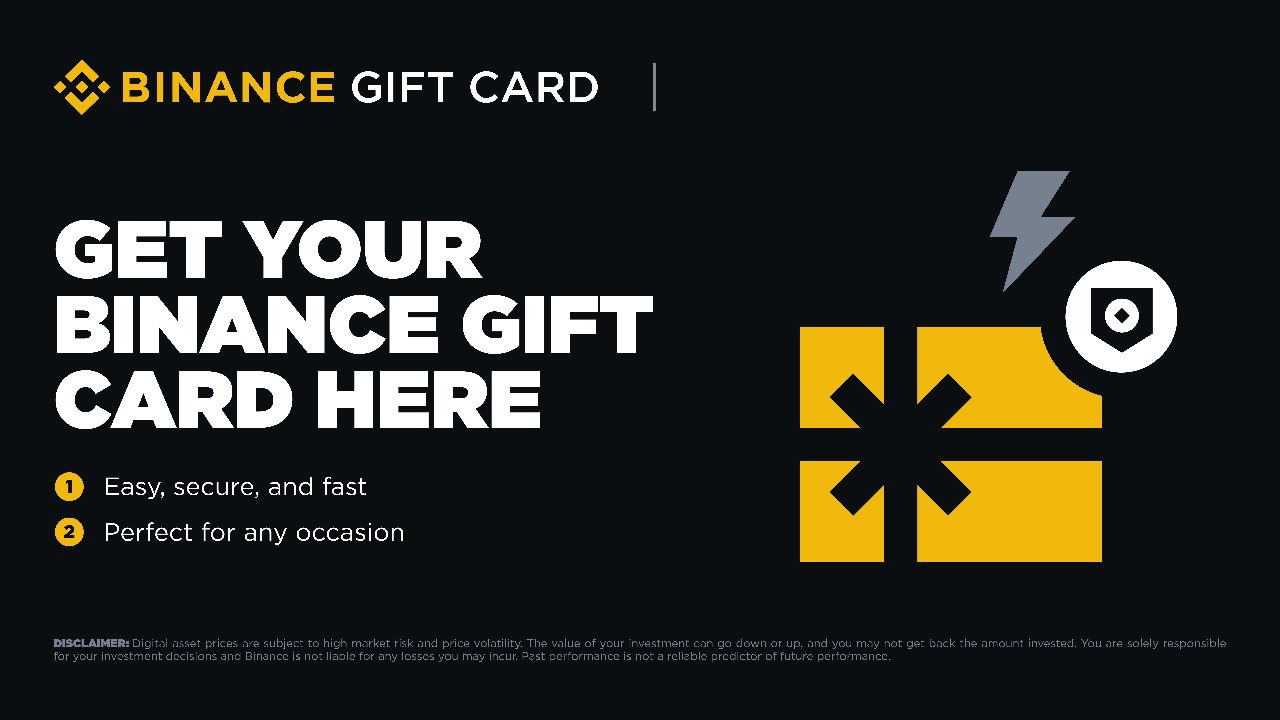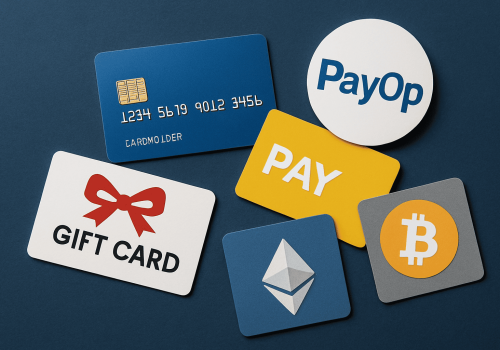Many customers prefer to buy gift cards with bank transfer because this method offers a level of control and transparency that is difficult to achieve with other payment instruments. A bank transfer follows a straightforward path: money moves directly from the customer’s bank account to the payment provider, passing through a regulated financial environment that users trust. This makes it an attractive option for buyers who value predictable payment flows and want to avoid intermediary tools like cards or digital wallets. Bank transfers are often chosen by users who appreciate having a clear transaction record and the ability to manage payments through their familiar banking interface.
On Baxity Store, customers can complete a bank transfer payment through certified external processors that support multiple types of transfers. Depending on the provider, available options may include SEPA transfers, local European bank transfers, or instant-transfer solutions that speed up the verification stage. This flexibility allows users in different regions to access suitable banking methods without changing their financial habits. After the external platform confirms the transfer, Baxity Store delivers the digital code directly to the customer’s account or email.
Since all orders require a Baxity Store account, the process remains secure, organized, and consistent. Once the payment is approved by the processing partner, the delivery of digital codes is nearly immediate. This combination of banking transparency and fast digital fulfillment makes bank transfers a comfortable and efficient method for purchasing gift cards online.
What Makes Bank Transfer a Useful Way to Buy Gift Cards
Bank transfers have evolved significantly over the last decades, transitioning from slow, manual processes to highly optimized digital systems. In the European Union, banking infrastructure has modernized to the point where transfers between banks often clear the same day, and in some cases within minutes. This evolution is one of the reasons why a bank transfer gift card purchase has become a realistic and convenient option for digital-first users. The infrastructure supporting these transfers is built on standardized rules, making it reliable and consistent across borders.
In the EU, bank transfers remain one of the most widely used financial tools, due in part to strict regulatory standards that focus on consumer protection and data integrity. SEPA transfers, in particular, demonstrate how coordinated financial policies can simplify cross-border payments. SEPA enables participating banks to process euro-denominated transfers under uniform rules, reducing operational friction and ensuring predictable outcomes. This creates a stable environment where digital purchases can be made confidently.
Modern SEPA systems rely on centralized clearing networks that minimize delays and reduce error rates. Because these systems function under strict supervision, buyers who choose secure bank transfer checkout benefit from enhanced protection and transparent handling of funds. The method appeals to users who prefer not to rely on card networks or digital wallet ecosystems and want each payment to remain firmly within the banking domain. This makes bank transfers an appealing choice for customers who prioritize simplicity, clarity, and a strong regulatory foundation when purchasing digital products.
What You Can Buy with Bank Transfer on Baxity Store
Customers often choose to pay with a bank transfer because it suits a wide range of purchasing scenarios. This method is particularly appreciated by users who prefer structured financial processes or who frequently manage funds through bank accounts rather than through cards or other instruments. On Baxity Store, bank transfer payments can be used to access several categories of digital products, allowing users to select items based on their needs and purposes. Many buyers consider this method convenient for planned purchases, business-related orders, or transactions that require an extra degree of oversight.
Gaming Credits
Many customers who rely on bank transfers purchase gaming-related products because these credits are often used for regular account top-ups. Available options include:
-
PlayStation
-
Xbox
-
Steam
-
Razer Gold
-
Roblox
-
PUBG Mobile
-
Free Fire
- Nintendo
Retail and Online Shopping
This category is suitable for those who want to add funds to widely used platforms or purchase digital goods within global ecosystems. Baxity Store supports:
-
Amazon
-
Google Play
Prepaid and Payment Cards
Prepaid cards are popular among users who want flexible and secure payment tools that work across numerous websites. The available options include:
-
Mastercard
-
Visa Prepaid
-
Neosurf
-
Paysafecard
-
JetonCash
Crypto and Web Services
Users interested in digital finance tools or crypto-related vouchers can choose from:
-
Binance Gift Card
-
Crypto Voucher
-
ICash.One
These categories give customers the ability to apply bank transfer payment methods to a wide range of digital items that suit both personal and professional needs. Whether the goal is entertainment, online shopping, account funding, or financial tools, paying with a bank transfer ensures that each transaction passes through a familiar, structured, and regulated financial system.
How Bank Transfer Payments Work on Baxity Store
Bank transfer payments on Baxity Store follow a structured sequence built around the interaction between the customer and an external, certified payment provider. When the user selects a bank transfer option at checkout, they are redirected to a dedicated transfer interface operated by the provider. This redirect system ensures that the financial transaction is handled within a secure banking environment rather than directly on the store’s website. The external platform displays the available transfer methods and instructions, guiding the user through the process with clarity and consistency. This model creates a separation between the purchase and the payment flow, improving security while preserving the efficiency of digital delivery.
Different types of bank transfers appear based on the customer’s location, the currency used, and the provider’s supported infrastructure. A user in the EU may see SEPA options, while another customer might have access to local European transfers or instant-transfer solutions if the banking network in that region supports them. These variations reflect regulatory conditions, regional banking standards, and the technical capabilities of the payment processor. Each provider integrates only the transfer types they can verify quickly and securely, so the system tailors the payment flow to ensure a smooth and compliant process for the customer.
Stages of the Bank Transfer Process
| Step | What Happens |
|---|---|
| Selection | User chooses a product and selects bank transfer |
| Redirect | External provider opens their transfer interface |
| Transfer Type | User chooses SEPA, local transfer, instant transfer if supported |
| Confirmation | Provider verifies the incoming transfer |
| Delivery | Baxity Store sends the code to the account or email |
This workflow is considered reliable because it places the sensitive banking interaction entirely within the provider’s environment while allowing Baxity Store to focus on immediate digital delivery once the payment is confirmed. It is a universal system that adapts to regional banking requirements, enabling users from different countries to complete transfers with the methods they already trust. As a result, bank transfers combine regulatory stability, flexible compatibility, and an efficient purchasing experience.
Why Customers Prefer Bank Transfer for Digital Purchases
Many customers gravitate toward bank transfers because they feel more comfortable using a method that aligns with long established financial habits. People who grew accustomed to managing payments directly through their bank often prefer the predictability of this approach. The connection to an official financial institution gives users confidence that their transactions are transparent, traceable, and handled within a controlled environment. This psychological comfort is especially important for digital purchases where trust plays a central role in the decision-making process.
Another reason users favor bank transfers is the level of financial discipline that accompanies this method. Completing a bank transfer payment requires deliberate action, which helps customers keep closer track of their spending. Each transfer creates a clear record in the user’s banking history, making it easier to monitor expenses and organize personal finances. This degree of clarity appeals to buyers who want structured payment flows without relying on multiple cards or external digital wallets. It also supports long term tracking, which is valuable for budgeting and regular digital purchases.
Bank transfers are also well suited for transactions involving larger sums, corporate expenditures, or purchases made from regions without consistent access to international card networks. For many businesses, a bank transfer gift card purchase allows them to maintain centralized control over payments and documentation. In regions where card acceptance is limited or restricted, bank transfers provide a dependable alternative backed by regulated financial institutions. This combination of adaptability and trust makes bank transfer a meaningful choice for a broad range of customers.
Who Bank Transfer Payments Are Best Suited For
Bank transfer payments are particularly suitable for users who prefer a structured and carefully documented payment process. Customers who value the ability to maintain detailed transaction records often find this method ideal, as every transfer appears in their banking statements with clear identifiers. Individuals who avoid using cards for security or personal preference reasons can rely on bank transfers as a straightforward way to complete online purchases without introducing additional financial tools. Corporate buyers benefit from the method as well, since bank transfers simplify reporting, auditing, and allocation of budgets for digital products. This payment method also works well for those who make substantial or frequent purchases, as transfers can offer stability and reliability even with large amounts. Users in regions with limited card support or those who depend on local banking infrastructures may also find bank transfers more dependable. As a result, this approach is well aligned with the needs of customers seeking consistency, oversight, and familiarity in their financial interactions.
FAQ About Buying Gift Cards with Bank Transfer
What is a bank transfer and how is it typically used in everyday financial activity?
A bank transfer is a direct movement of funds from one bank account to another, handled entirely through regulated financial institutions. It is commonly used for recurring payments, such as rent, utilities, or business invoices, because it provides a clear, traceable financial trail. Most bank transfers operate through established clearing systems that verify the sender, confirm the recipient, and document the transaction in banking records. This makes the method reliable for users who prefer predictable financial procedures. Bank transfers also remain popular because they do not require additional tools or payment instruments. As long as the sender has access to online banking, the method functions consistently and remains accessible to a wide range of customers.
How does SEPA influence the experience of users who rely on bank transfers in Europe?
SEPA, the Single Euro Payments Area, has standardized financial transactions across participating European countries, making euro-denominated transfers much more efficient. By creating unified rules for banks within the region, SEPA has eliminated many of the barriers that used to complicate cross-border payments. This gives users confidence that their transfers will follow predictable timelines and maintain consistent processing logic. SEPA also supports a high level of interoperability, allowing banks in different countries to communicate without complex manual procedures. Users benefit from this because transfers tend to clear faster and with fewer errors. For many customers, SEPA has modernized the traditional bank transfer, making it more suitable for digital purchases.
What advantages do bank transfers offer compared to more modern payment tools?
Bank transfers remain relevant because they offer a degree of formality and documentation that some alternative payment methods do not provide. Each transaction is automatically recorded in the customer’s financial history, allowing for clear audit trails and straightforward budgeting. The method does not depend on card networks or wallet providers, giving users direct control from their bank account. Bank transfers are also less susceptible to issues related to card limits or wallet identity checks because they rely on different verification mechanisms. For individuals or companies that prefer standardized payment practices, the bank transfer retains significant appeal. It is also well suited for transactions that must comply with internal accounting rules or reporting procedures.
Do bank transfers differ between countries and banking systems?
Yes, bank transfers can vary in speed, structure, and processing rules depending on the region and financial system. Some countries support instant transfer networks, while others rely on batch processing, which may require additional time. The naming conventions and user interfaces also differ, which means that customers may encounter different terminology when initiating transfers abroad. However, the core principles remain the same, since transfers universally rely on bank-to-bank communication and regulated clearing frameworks. Differences also arise in transfer fees, although many regions, such as the EU through SEPA, have minimized or removed such charges. These variations mean that users often choose transfer methods aligned with their location and banking preferences.
Can bank transfers be used for business-related digital purchases?
Bank transfers are widely used for business transactions because they support formal documentation and structured financial workflows. Companies often prefer transfer-based payments when buying digital products, as they integrate easily with accounting systems and financial oversight tools. A transfer allows businesses to track expenses precisely, assign them to specific departments, and maintain transparent transaction logs. This is particularly important for organizations that purchase digital products in bulk or on a recurring basis. Many businesses also appreciate that transfers bypass card limits and reduce reliance on shared corporate cards. As a result, bank transfers remain one of the most practical methods for corporate procurement of digital goods.
Why do many users consider bank transfers more transparent than other payment options?
Transparency is a defining characteristic of bank transfers because every detail of the transaction is recorded by the customer’s financial institution. Users can see the amount sent, the time and date of the transfer, and the identity of the receiving party, all within their banking history. This reduces ambiguity and allows customers to verify each action without relying on third-party dashboards or external platforms. The transparency also extends to the way fees and processing times are communicated, as banks typically present these details clearly. For users who prefer straightforward payment structures, this visibility creates a sense of control. It is one of the main reasons why bank transfers remain a popular choice even as digital payment methods diversify.




